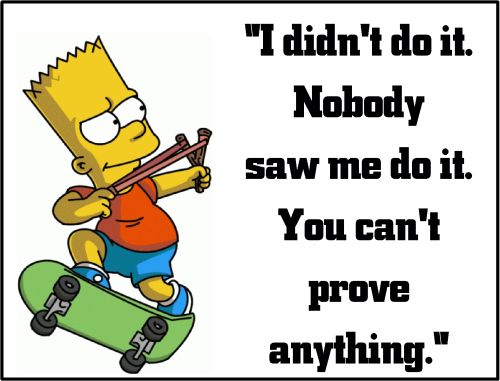What Makes a Great Root Cause System?

What factors make a great root cause system?
That’s a question that I started researching back in 1985. What would I say is the answer to the factors that make a great root cause system after 38 years of research? Here are the 13 factors that are my best ideas to make a great root cause system.:
- Guides Investigator
- No Blame
- What Happened
- Consistency
- New Ideas
- A System
- Flexibility
- Promotes Trending
- Management Understands
- Great Training
- Proven Effective
- Software Support
- Continuously Improved
Read on about each of the factors.
1. Guides Investigator
The root cause system needs to guide investigators to the real, fixable root causes of human performance and equipment reliability problems.
Most root cause systems don’t do this. Cause-and-effect, 5-Whys, fishbone diagrams, Why Trees, and Fault Trees all require someone on the team to know the right answer. This is especially troublesome when it comes to human error because most investigators have not been trained in human factors. Thus, they are guessing at the causes of human error.
Find out more about guided root cause analysis HERE.
2. No Blame
Blame is probably one of the biggest obstacles to finding the causes of incidents. If people think that the outcome of an investigation will be blame, you won’t get their full and free cooperation. You will start having mystery incidents where no one knows what caused the problem. You might get the Bart Simpson response:

That doesn’t lead to a great root cause analysis.
Some root cause systems actually have “blame categories.” (See THIS LINK.) Other people think that blame makes sense. (See THIS LINK.)
3. What Happened

You have to understand what happened BEFORE you can understand why it happened. That’s why I see many people adding a “timeline” to the use of 5-Whys. If you don’t understand the sequence of events, you can’t understand the causes of what went wrong. A thorough understanding of “What happened?” is a must for great root cause analysis. How do you understand what happened? CLICK HERE for more info.
4. Consistency
If two different teams performed the root cause analysis, would they find the same root causes?
Many root causes systems fall short when it comes to consistency. The analysis depends on who is on the team. And it often depends on the conclusions the investigators reach before the investigation starts. Sometimes people just set out to find their favorite causes. They are consistent … but a different team may have different favorite causes.
Thus, two teams looking at the same or similar incidents develop different conclusions.
Read about an organization that improved its consistency of results HERE.
5. New Ideas

Does your root cause system stimulate new ideas to solve problems? It should. It should provide investigators with guidance to help people fix the root causes they find.
Often, investigators can’t see new strategies to fix problems beyond those that have been tried and failed.
This is Einstein’s definition of insanity. Trying the same solutions and expecting a different result.
6. A System
A “root cause tool” is not enough. You need a root cause analysis system.
What is a root cause analysis system? A set of tools designed to work together to achieve a superior result. There should be a process with steps and tools to achieve those steps, which keeps the investigator on track to achieve the result.
Find out more about root cause systems HERE.
7. Flexibility

You should be able to use your root cause system for simple incidents or major accidents. That’s a test of the system’s flexibility.
You can’t afford to train people on two systems (one for simple incidents and one for major accidents). And even if you can, you will have to get them practiced in multiple systems (which is difficult).
Also, management will need to learn what to expect from two dissimilar systems.
Thus, two systems make for wasted training and effort.
How can a system be flexible? Find out HERE.
8. Promotes Trending
You should use the data from your root cause analysis system to understand performance and spot trends.
Does your system have a built-in categorization designed to promote accurate trending? Or are you trying to do text word searches to detect trends?
Management needs effective trending to manage performance. A system designed with built-in categorization can help management understand negative and positive trends.
For more about trending, read THIS BOOK.

9. Management Understands
Your system has to be understood by your management.

In fact, it should be designed so that the end result is an easy-to-understand management presentation. One that explains what happened, what cause the problems, and what we need to do to stop future incidents.
10. Great Training

What good is a great root cause analysis system if you don’t have great training to get people to understand and use the system?
You may want to inquire about the number of trainers and their experience. Is your root cause system supported around the world?
11. Proven Effective
Has the system been proven to be effective by users around the world? Does the system have success stories from around the globe? References that you can believe?
Look for statistically significant improvements and sustained performance over time.
See examples of success stories HERE.
12. Software Support
How long has the system had effective software that makes the system easy to use?
Can that software be tied to other systems (safety or quality software)?
Is the software patented?
Does the software have effective support for software users?
13. Continuously Improved
Is the system being continuously improved?
Do they have an advisory board of users to evaluate performance and suggest improvements?
What are the plans for future improvements?
Do they sponsor annual user meetings to share best practices?
Find out more about the continuous improvement of root cause analysis HERE.
What System Excels at All 13 Factors?
Those are 13 factors that outline a superior root cause analysis system.
What system can meet and excel in all 13 factors? The only one I know about is the TapRooT® Root Cause System.
Want to learn more about the TapRooT® System, Training, and Software and see how it meets the factors listed above? Then you should talk to one of our implementation advisors about the advantages that the TapRooT® RCA System can bring to your company.
CLICK HERE to contact one of our implementation advisors or call 865-539-2139.





I am trained trainer of taproot and extensively used in past organization. Absolutely agree with the 13 factors listed above.